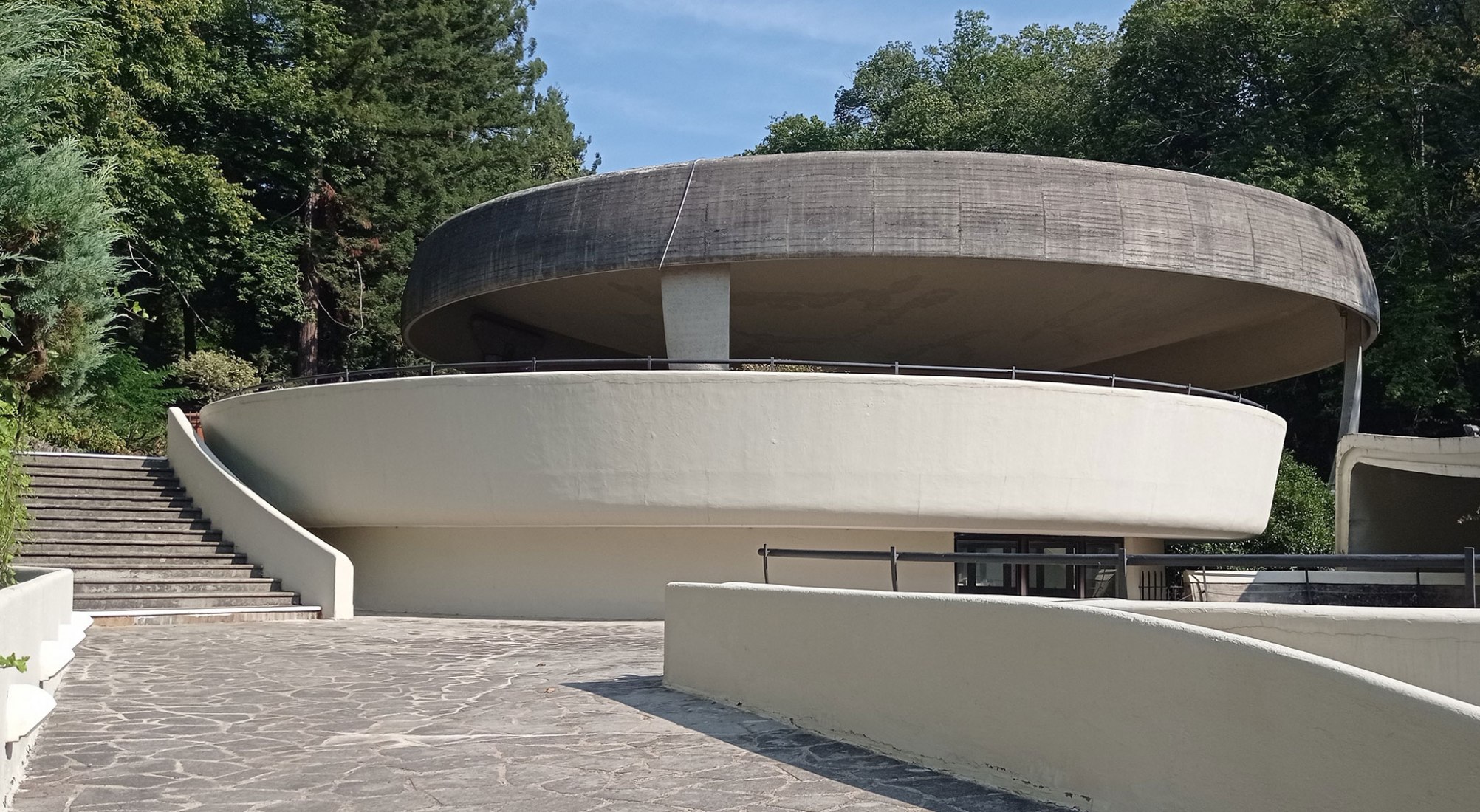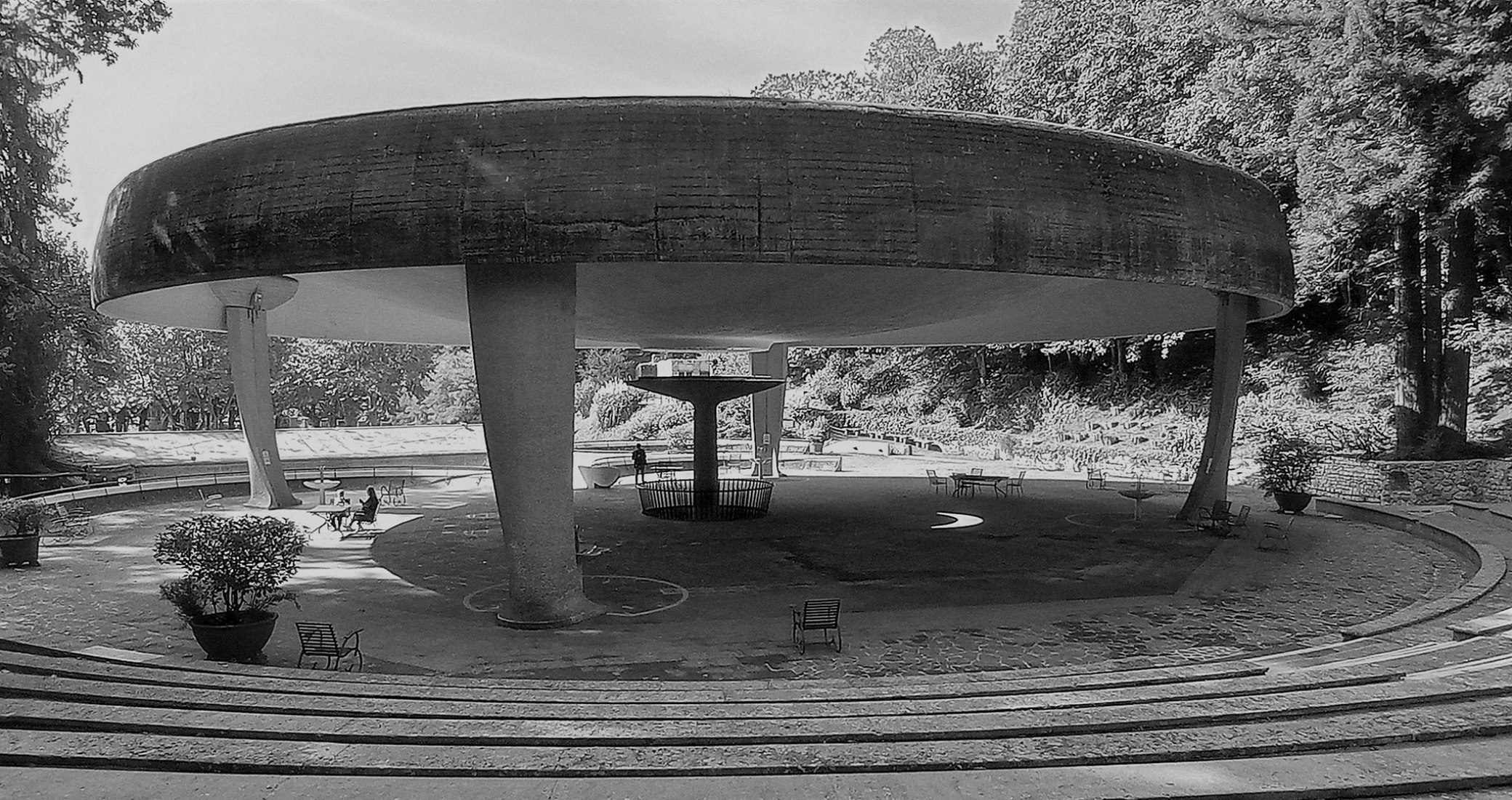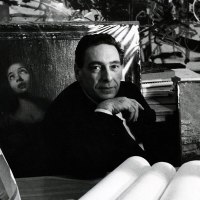While in 2008 Zaha Hadid and Patrick Schumacher presented their manifesto "Parametricism Manifesto" at the Venice Architecture Biennale, stating that parametric design (which studies the possible applications of mathematics to architecture) is the avant-garde of the 21st century, Luigi Moretti had investigated parametric architecture 50 years earlier.
In 1960 Luigi Moretti assembles the Exhibition of Parametric and Operative Architecture for Urbanism, at the XII Milan Triennial, experimenting with the modulation of curvilinear surfaces. Parametric experiments that he had already verified in 1954 with curved surfaces and granulated plaster in the house on the beach of Santa Marinella; then in the profiles of Watergate in Washington (1960-1965); on the terraces of the San Maurizio condominium on the slopes of Monte Mario (1962) and the surprising prefabricated domes of the Villa Borghese underground car park (1966-72) in Rome; finally, in the Fonti Bonifacio VIII thermal complex in Fiuggi (1966-70) a work that closes the season of his masterpieces.
While for Zaha Hadid the interest in parametric architecture, as well as in the Baroque, is directed to the epidermal modeling of the form to create "a spectacular and empty unreality inspired by the systematic abstractions of capitalism" (Sam Jacob), in the project of the thermal waters in Fiuggi by Moretti, you will find a surprising spatial sequence.
This work summarizes the synthesis of the great architect's stations: from the classical models to the admiration of Gaudí, to the study of the language of the Roman Baroque. Zaha Hadid's projects are "posters that always reproduce like themselves and that fulfill, in their obsessive repetitiveness, the function of creating an image suitable for any type of product, indifferent to any context" (Vittorio Gregotti), in Moretti's works show the constant desire for renewal and the study of places.
In Fiuggi, Moretti defies the force of gravity undermining certainties: the long avenue with a double row of plane trees, flanked by passages covered by large and (incredibly) thin sails, supported by prestressed concrete beams, designed with the engineer Silvano Zorzi, ends in front of the virtuosity of engineering, the "Arab tent": a reinforced concrete roof that folds with the softness and lightness of the fabric, a kind of canopy that anticipates the imposing central staircase that leads to the suggestive space of the Upper circular terrace with an impluvium roof, reminiscent of the Pantheon and the ancient Roman baths.
Moretti models plastic volumes in concrete against the backdrop of exuberant nature, a contrast between artifice and nature that establishes a harmonious balance between the built environment and the natural environment.
When tracing the routes, he proposes solutions compatible with the natural orography of the places, articulating itineraries according to perimeters capable of connecting the different poles of interest of the thermal structure, with sensitivity and attention to the context.
In 1960 Luigi Moretti assembles the Exhibition of Parametric and Operative Architecture for Urbanism, at the XII Milan Triennial, experimenting with the modulation of curvilinear surfaces. Parametric experiments that he had already verified in 1954 with curved surfaces and granulated plaster in the house on the beach of Santa Marinella; then in the profiles of Watergate in Washington (1960-1965); on the terraces of the San Maurizio condominium on the slopes of Monte Mario (1962) and the surprising prefabricated domes of the Villa Borghese underground car park (1966-72) in Rome; finally, in the Fonti Bonifacio VIII thermal complex in Fiuggi (1966-70) a work that closes the season of his masterpieces.
While for Zaha Hadid the interest in parametric architecture, as well as in the Baroque, is directed to the epidermal modeling of the form to create "a spectacular and empty unreality inspired by the systematic abstractions of capitalism" (Sam Jacob), in the project of the thermal waters in Fiuggi by Moretti, you will find a surprising spatial sequence.
This work summarizes the synthesis of the great architect's stations: from the classical models to the admiration of Gaudí, to the study of the language of the Roman Baroque. Zaha Hadid's projects are "posters that always reproduce like themselves and that fulfill, in their obsessive repetitiveness, the function of creating an image suitable for any type of product, indifferent to any context" (Vittorio Gregotti), in Moretti's works show the constant desire for renewal and the study of places.
In Fiuggi, Moretti defies the force of gravity undermining certainties: the long avenue with a double row of plane trees, flanked by passages covered by large and (incredibly) thin sails, supported by prestressed concrete beams, designed with the engineer Silvano Zorzi, ends in front of the virtuosity of engineering, the "Arab tent": a reinforced concrete roof that folds with the softness and lightness of the fabric, a kind of canopy that anticipates the imposing central staircase that leads to the suggestive space of the Upper circular terrace with an impluvium roof, reminiscent of the Pantheon and the ancient Roman baths.
Moretti models plastic volumes in concrete against the backdrop of exuberant nature, a contrast between artifice and nature that establishes a harmonious balance between the built environment and the natural environment.
When tracing the routes, he proposes solutions compatible with the natural orography of the places, articulating itineraries according to perimeters capable of connecting the different poles of interest of the thermal structure, with sensitivity and attention to the context.
"The composition of the terraces on several levels insists on the association of differently expanded discs that, avoiding the edges, are insinuated, without rigidity, in the thick forest of green pines. "
Luigi Moretti.
Zaha Hadid and those who like her have worked and work for the spectacular nature of the form, regardless of the physical and social reality of the place, design for the solitude of their firm, creating monumental design pieces; Luigi Moretti has worked for the cities thinking about those who live there. Before the amazement and the cloying aristocracy of forms, you preferred the substance of architecture, you rediscovered Luigi Moretti.







































